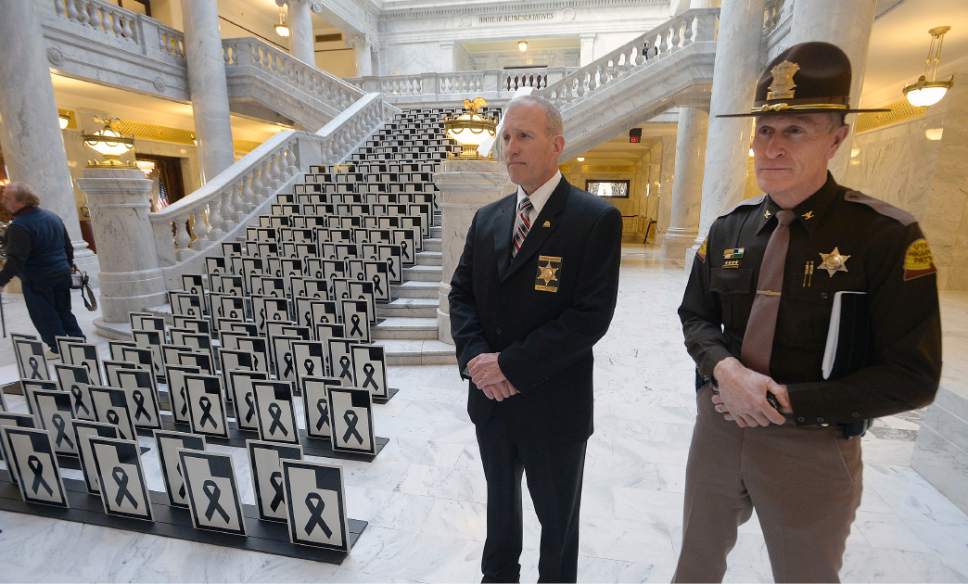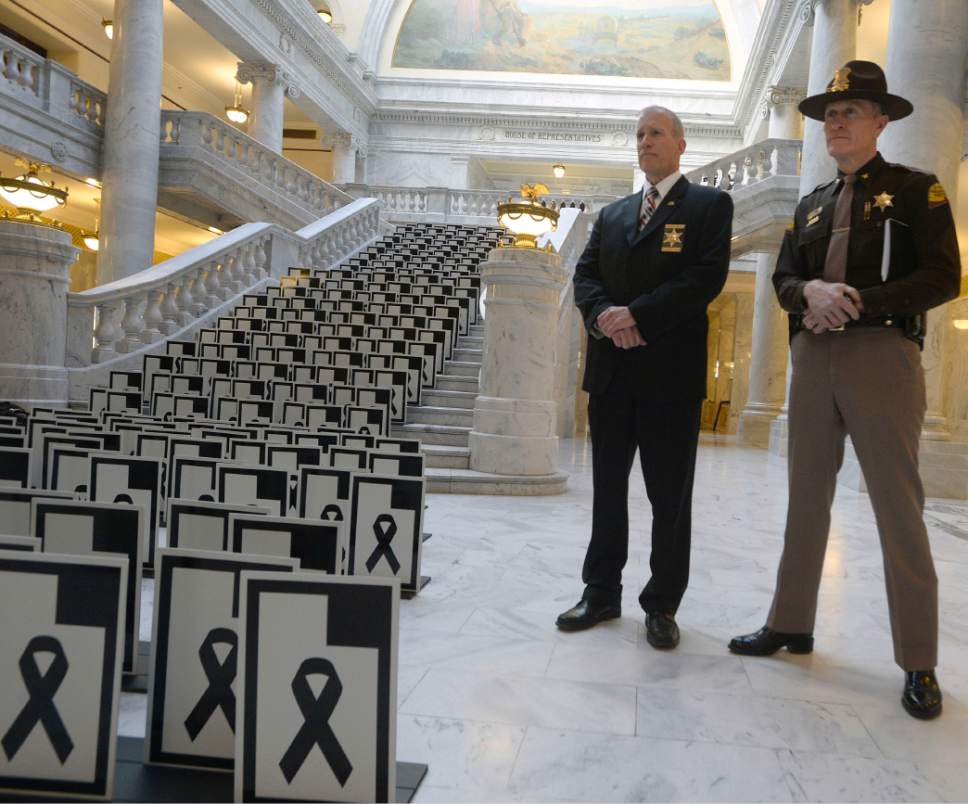This is an archived article that was published on sltrib.com in 2017, and information in the article may be outdated. It is provided only for personal research purposes and may not be reprinted.
Despite efforts to cut down on fatalities on Utah roads, the number has risen for the fourth year in a row.
In 2016, there were 280 deaths because of traffic crashes, and 94 percent of them occurred because of human error. Last year, 278 people died on Utah roads.
"It is in our hands. It is preventable," Department of Public Safety spokeswoman Marissa Villasenor said during a Wednesday news conference, adding that even though officials harp on the same things year after year — like wearing seat belts and slowing down — "unfortunately not a lot is changing."
What stood out for DPS Commissioner Keith Squires about 2016's statistics, he said, was "just how many people aren't wearing their seat belts and how much that contributes to not surviving crashes."
Eighty-six people died because they weren't properly restrained by seat belts or child safety seats, according to a news release by Zero Fatalities. And while 77 people died from crashes involving a driver under the influence of drugs or alcohol, almost the same number — 76 people — were killed in incidents involving aggressive driving.
"A lot of times it's good people that just feel an anonymity when they're out on the highway," Squires said of aggressive drivers. They are spotted "cutting in and out of traffic, going much faster than the traffic flow, using the HOV lane as needed to get around cars, getting up close on another vehicle."
But those same people would never "get into a bank line or the supermarket and behave like that," he said.
The DPS and the Utah Department of Transportation hope to get the attention of aggressive drivers and urge them to "take your time, plan your trips better and please slow down."
Interstate 15 was the deadliest road in the state last year, with 24 people dying in crashes along the highway, the release said. Salt Lake County accounted for almost a quarter of fatal crashes, while Utah County accounted for about 11 percent.
While 194 people who died were in cars, the release said, 42 were on motorcycles and 39 were pedestrians. Most crashes occurred on dry roads during the day.
It's easy to look at the statistics and just see numbers, Squires said, but each number "involves a family — a mother, a father, a brother, a sister, a child — and an officer that's showing up at that door of that house ... to make notification."
Squires, who began his career as a trooper, said he remembers clearly the overwhelming feeling he had as he drove to homes to notify families of a death.
"Because it's something that they'll remember the rest of their lives," he said. "... Every one of these was somebody's loved one."
The Utah Department of Transportation's executive director, Carlos Braceras, said he feels "outraged" and "frustrated" that after fatalities had declined so much — going from 329 in 2002 to 217 in 2012 — they are back on the rise.
Utah roads themselves "have never been safer," Braceras said, because UDOT constantly evaluates them against the current national safety standard.
"Every project we do," Braceras said, is an effort to make the road safer.
Education for young drivers — especially in high schools across the state — is also "critical" for lowering the fatality rate, he said. UDOT and DPS plan to "intensify" outreach this year with a goal to be invited into every high school in the state.
The ultimate goal is still to have zero fatalities on Utah roads, Braceras said, which occurred during 186 days last year.
"Over half the days, we got to zero fatalities," he said. "Why can't we do that [the rest of year], too? I believe we can."
Twitter: @mnoblenews











